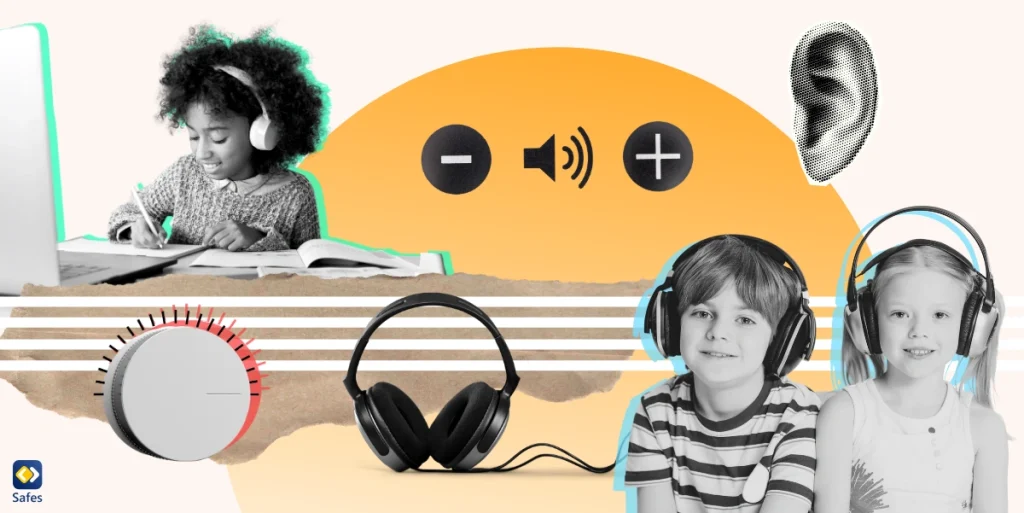In today’s rapidly evolving digital landscape, the question of “Should phones be allowed in school?” remains at the forefront of educational debates. While some view smartphones as indispensable tools that complement modern learning, others perceive them as distractions that hinder academic progress. This blog post aims to offer a balanced exploration of the pros and cons of smartphone usage in schools. Whether you’re an educator, parent, or student, our comprehensive analysis provides insights that will help you understand the issue from all angles. Dive in as we dissect this contemporary educational conundrum.
Download and Start Your Free Trial of the Safes Parental Control App
Why Should Cell Phones Be Allowed in School
In the digital age, smartphones have transcended their role as mere communication devices, evolving into potent learning tools that enrich both educational and non-educational experiences in schools. Here are some compelling reasons to consider allowing them in the classroom.
- Resource Accessibility: Smartphones grant students immediate access to a wealth of information online. Whether they’re checking facts, exploring topics further, or accessing e-books, the internet at their fingertips promotes independent learning.
- Learning Apps and Tools: There’s an app for almost everything, and education is no exception. From language learning apps like Duolingo to interactive science labs, phones can offer a variety of tailored educational experiences.
- Engagement: For many students, interactive technology can make lessons more engaging. Educational games, quizzes, and group projects facilitated by smartphones can invigorate classroom dynamics and foster active participation.
- Flexibility and Personalization: Every student is unique. Smartphones equipped with educational AI can tailor learning experiences, allowing students to progress at their own pace and explore personal interests. AI insights optimize resources and strategies for everyone’s learning style.

Safety at a Swipe: Phones as Lifelines in Crises
In addition to their educational value, smartphones also play a crucial role in enhancing the safety and communication aspects in schools.
Consider this: If a security threat emerges in a school environment, the ability for students to swiftly contact parents or authorities can be crucial. With their personal phones, students have direct lines of communication with those who can help, whether it’s alerting parents to their safety status or reaching out to emergency responders. Furthermore, in cases where the main communication lines within the school are compromised, student phones can serve as backup channels to relay vital information.
By permitting phones, schools acknowledge the indispensable role they play in facilitating rapid communication, especially during emergencies, thus ensuring the well-being of their students.
Digital Natives: Bridging the School-World Tech Gap
Arguably, the most compelling reason for allowing phones in school is that cell phones are an integral part of the real world, especially in professional settings. In today’s rapidly digitizing world, mastering digital literacy and responsible smartphone use are imperative life skills. Schools have the duty to not just educate students academically but also prepare them for the real world. By allowing phones in schools and teaching students how to use them responsibly, educators can simulate real-world situations.
Most professions today demand proficiency in technology and the ability to multitask using digital devices. In fact, according to a survey conducted by Zippia, 84% of companies allow or require employees to use their personal cell phones for work tasks. Smartphones are now tools of trade, communication, research, and planning. Instead of shunning them, integrating them into the educational setting can offer students hands-on experience. It also provides an opportunity for educators to instill the principles of digital etiquette, online safety, and discerning credible from non-credible sources.
By embracing smartphones as learning tools, schools can equip students with the digital acumen they need to thrive in the 21st century, ensuring they’re not just literate but digitally adept.
Why Phones Should Not Be Allowed in School
Using phones in school isn’t without its challenges. To create an optimal learning environment and protect students, it’s crucial to weigh the educational benefits against these significant concerns.
Ringing Distractions: The Peril of Phones in the Classroom
One of the primary arguments against allowing phones in schools centers on the potential distractions they pose. Smartphones come equipped with various apps, games, and social media platforms that can divert a student’s attention from the lesson. Even with the best intentions, constant notifications can be hard for many students to ignore, leading to fragmented attention during classes.
A study published in Educational Psychology found that students who use their devices in class tend to get lower exam scores. What’s more striking is the effect on their peers. The study showed that classmates who didn’t use their phones but were in a class with those who did, also tended to score lower. This suggests that phone use in class doesn’t just distract the user, but also their peers, causing a wider disruption in the learning environment. In such scenarios, teachers might find themselves managing phone-related disruptions instead of focusing on the curriculum.

Behind the Screen: The Hidden Dangers to Student Privacy
Beyond the potential for distraction, another layer of complexity arises when considering the issue of student privacy and digital safety in schools. With students having access to smartphones, there is an ever-present risk of exposure to inappropriate content, cyberbullying, and hacking attempts. Personal photos, messages, and other sensitive data can be easily accessed and misused, compromising a student’s privacy. Cyberbullying has also evolved with technology, making it easier for bullies to hide behind screens and target their peers, causing emotional distress.
However, these concerns aren’t insurmountable. Schools can implement strategies such as providing students with cybersecurity education, teaching them the importance of strong, unique passwords, and being cautious of suspicious links and apps. Schools could also utilize filtering software to limit access to inappropriate content on school Wi-Fi. Collaborative efforts between parents, teachers, and students to foster a safe digital environment can strike a balance between the advantages of phone usage and ensuring the privacy and security of young learners.

School Policies and Guidelines on Phone Usage
Clear phone usage policies in schools foster understanding between students, parents, and educators, mitigating inconsistencies and potential misunderstandings. Striking a balance is key; while phones offer valuable learning tools, they can also become distractions. Singapore’s “Teach Less, Learn More” approach exemplifies a successful balance, allowing students to use phones for educational purposes like note-taking and research. The Journal of Media Literacy Education indicates that such balanced policies can boost student engagement and outcomes.
Effective communication of these guidelines is vital. Schools can utilize meetings, handbooks, and digital resources to keep all stakeholders informed. Beyond policy creation, consistent enforcement ensures a harmonious integration of the digital age into the learning environment.
Conclusion
The debate on smartphones in schools is multifaceted, presenting both notable benefits and concerns. While they offer enhanced learning opportunities and foster digital literacy, challenges like distractions and privacy issues arise. The solution lies in creating balanced, well-defined school policies and fostering collaboration among educators, parents, and students. Embracing phones intelligently in education prepares students for a digitally interconnected 21st-century world, promoting both academic growth and responsible digital citizenship.
Your Child’s Online Safety Starts Here
Every parent today needs a solution to manage screen time and keep their child safe online.
Without the right tools, digital risks and excessive screen time can impact children's well-being. Safes helps parents set healthy boundaries, monitor activity, and protect kids from online dangers—all with an easy-to-use app.
Take control of your child’s digital world. Learn more about Safes or download the app to start your free trial today!




